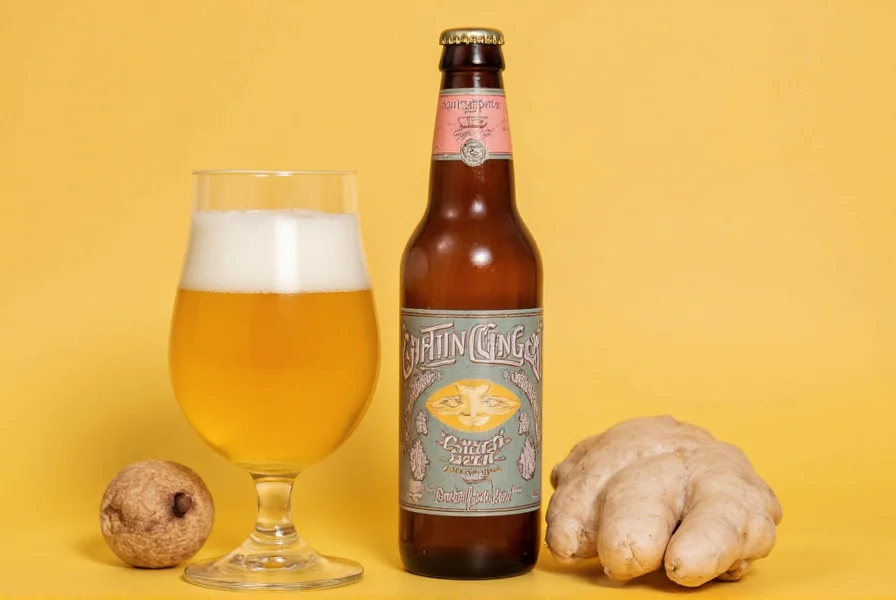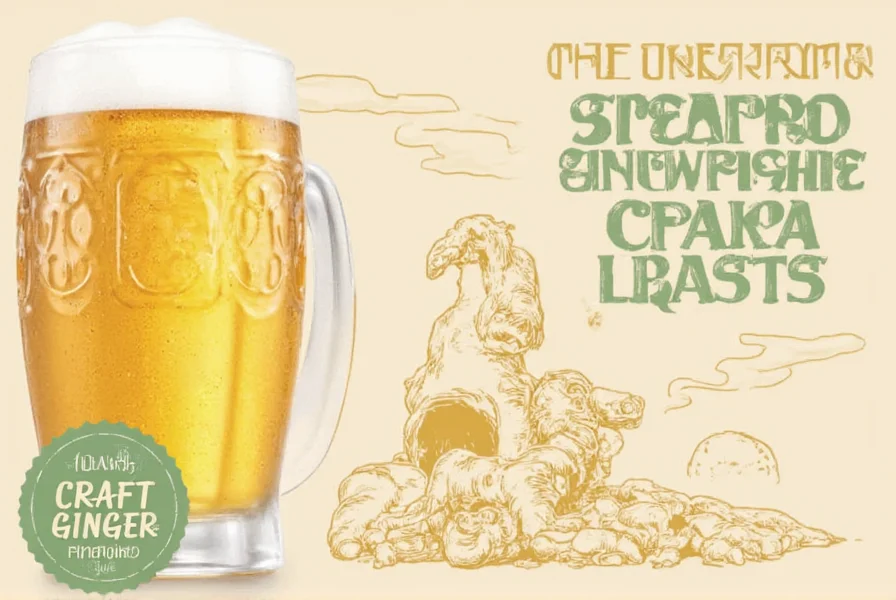Crafting ginger beverages at home combines culinary tradition with simple fermentation science. Using fresh ginger root as the foundation, you can create complex, flavorful drinks that surpass store-bought alternatives in both taste and health benefits. The process requires minimal equipment and ingredients while offering endless customization possibilities.
The Science Behind Craft Ginger Fermentation
Ginger's natural enzymes and sugars interact with yeast or a ginger beer plant (a symbiotic culture) to create carbonation and subtle flavor development. Unlike commercial products that rely on forced carbonation and artificial flavors, craft ginger beverages develop their characteristic fizz and complexity through natural fermentation.
The fermentation process typically takes 3-7 days at room temperature, during which beneficial compounds multiply while creating that signature spicy-sweet profile. Temperature control proves crucial—too warm and the fermentation becomes overly aggressive; too cool and the process stalls.
Essential Ingredients for Successful Craft Ginger
Quality ingredients form the foundation of exceptional craft ginger beverages. While recipes vary, these core components remain essential:
| Ingredient | Function | Quality Considerations |
|---|---|---|
| Fresh ginger root | Provides spicy flavor compounds and natural enzymes | Choose firm, smooth roots with no soft spots; organic preferred |
| Unrefined sugar | Fuels fermentation and balances spice | Raw cane sugar, maple syrup, or honey work best |
| Water | Base liquid for extraction and fermentation | Filtered or spring water; avoid chlorinated tap water |
| Culture starter | Initiates fermentation process | Fresh lemon juice, ginger beer plant, or champagne yeast |
Step-by-Step Craft Ginger Beer Preparation
Creating authentic craft ginger requires attention to detail but remains accessible to beginners. Follow these steps for consistent results:
- Prepare the ginger base: Peel and grate 150g fresh ginger root. Combine with 4 cups water and bring to a simmer (do not boil). Steep for 20 minutes.
- Add sweetener: Stir in 1 cup unrefined sugar until completely dissolved. Remove from heat and cool to room temperature.
- Introduce culture: Once cooled below 85°F (29°C), add 1/4 cup lemon juice or your chosen starter culture.
- Initial fermentation: Transfer to a clean glass container, cover with breathable cloth, and let sit at room temperature for 24-48 hours.
- Bottle conditioning: Strain into clean bottles with tight-sealing lids, leaving 1-2 inches headspace. Store at room temperature for 2-5 days.
- Refrigerate: Once desired carbonation level is reached, refrigerate to slow fermentation.

Advanced Techniques for Flavor Development
Once you've mastered the basic craft ginger recipe, experiment with these flavor enhancements:
- Secondary fermentation: Add fruit juices, herbs, or spices during bottling for complex flavor development
- Temperature staging: Vary fermentation temperatures to control carbonation levels and flavor profiles
- Multiple strains: Combine different yeast strains for nuanced flavor complexity
- Aging: Allow finished ginger beer to age in the refrigerator for 1-2 weeks to mellow flavors
Popular craft ginger variations include adding turmeric for earthiness, citrus zest for brightness, or warming spices like cinnamon and cloves for seasonal interpretations. The key to successful experimentation lies in making incremental changes while documenting results.
Safety Considerations in Ginger Fermentation
While generally safe, craft ginger preparation requires attention to food safety principles:
- Always use clean, sterilized equipment to prevent contamination
- Monitor pressure buildup during bottle conditioning—use plastic bottles initially to gauge carbonation
- Refrigerate after desired carbonation level is reached to prevent over-pressurization
- Discard any batches with mold, off odors, or unusual colors
- Those with compromised immune systems should consult healthcare providers before consuming fermented beverages
Troubleshooting Common Craft Ginger Issues
Even experienced crafters encounter challenges. Here's how to address frequent problems:
- Insufficient carbonation: Extend bottle conditioning time or increase sugar content slightly in next batch
- Excessive spiciness: Reduce ginger quantity or shorten initial steeping time
- Cloudy appearance: Normal in craft ginger; strain more thoroughly next time if preferred
- Overly sweet flavor: Extend initial fermentation period to allow more sugar conversion
- Bottle explosions: Always refrigerate after carbonation develops and use proper pressure-rated bottles
Storing and Serving Your Craft Ginger Creations
Proper storage maintains quality and safety of your homemade ginger beverages. Keep refrigerated bottles upright and consume within 4-6 weeks for optimal flavor. Serve chilled in glasses that enhance the drinking experience—tulip-shaped glasses work particularly well for appreciating the aroma.
For non-alcoholic craft ginger, the fermentation process should be stopped before significant alcohol develops (typically within 3-5 days at room temperature). Those seeking traditional ginger beer with minimal alcohol content can extend fermentation to 7-10 days before refrigerating.
Conclusion: The Enduring Appeal of Craft Ginger
Crafting ginger beverages connects modern home brewers with centuries of tradition while offering complete control over ingredients and flavor profiles. Unlike commercial products filled with artificial flavors and preservatives, homemade craft ginger delivers authentic, vibrant taste with the satisfaction of creation. Whether you're a fermentation novice or experienced home brewer, the journey of perfecting your craft ginger recipe offers endless opportunities for creativity and enjoyment.
Frequently Asked Questions
How long does craft ginger beer typically ferment before it's ready?
Most craft ginger beer reaches optimal carbonation and flavor within 3-7 days of bottle conditioning at room temperature. Check daily after day 3 by carefully opening one bottle—when it fizzes vigorously but doesn't overflow, it's ready to refrigerate. The exact time varies based on temperature and sugar content.
Can I make craft ginger beer completely alcohol-free?
Yes, you can create non-alcoholic craft ginger by limiting fermentation time. Refrigerate the beverage after 24-48 hours of initial fermentation, before significant alcohol production occurs. The resulting drink will have minimal carbonation but can be force-carbonated using a soda siphon if desired.
What's the difference between craft ginger beer and ginger ale?
Traditional craft ginger beer undergoes natural fermentation, creating complex flavors and natural carbonation, while ginger ale typically refers to a carbonated beverage made by forcing CO2 into a ginger-flavored syrup. Craft ginger beer generally contains more ginger and develops deeper flavor complexity through fermentation.
Why does my craft ginger taste too vinegary?
A vinegary taste indicates over-fermentation where acetic acid bacteria have become dominant. This happens when fermentation continues too long or when improper hygiene allows unwanted bacteria to thrive. To prevent this, maintain proper sanitation, monitor fermentation time carefully, and refrigerate once desired carbonation is achieved.
How can I make my craft ginger less spicy while maintaining flavor?
To reduce spiciness while preserving flavor, try peeling the ginger thoroughly (the spiciest compounds concentrate near the skin), shorten the initial steeping time, or use slightly older ginger root which tends to be milder. You can also balance the heat with complementary flavors like citrus or honey during secondary fermentation.











 浙公网安备
33010002000092号
浙公网安备
33010002000092号 浙B2-20120091-4
浙B2-20120091-4